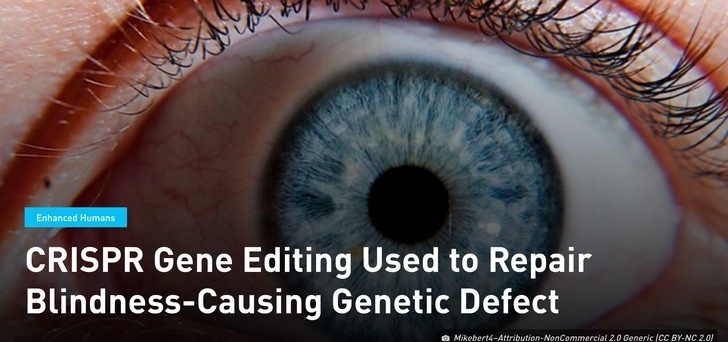CRISPR is now more precise. High-fidelity CRISPR-Cas9 nucleases have no detectable off-target mutations.
Adam Rifkin stashed this in CRISPR
Stashed in: CRISPR, DNA, Mesmerizing
A new engineered version of the gene-editing CRISPR-Cas9 nuclease appears to robustly abolish the unwanted, off-target DNA breaks that are a significant current limitation of the technology, reducing them to undetectable levels.
In their report receiving advance online publication in Nature, Massachusetts General Hospital (MGH) researchers describe how altering the Cas9 enzyme to reduce non-specific interactions with the target DNA may greatly expand applications of the gene-editing technology.
"Our creation of a Cas9 variant that brings off-target effects to levels where we can no longer detect them, even with the most sensitive methods, provides a substantial advance for therapeutic applications in which you want to accurately hit your target without causing damage anywhere else in the genome," says J. Keith Joung, MD, PhD, associate chief for Research and the Jim and Ann Orr MGH Research Scholar in the MGH Department of Pathology, senior author of the Nature paper. "But its impact will also be incredibly important for research applications because off-target effects can potentially confound the results of any experiment. As a result, we envision that our high-fidelity variant will supplant the use of standard Cas9 for many research and therapeutic applications."
Used to create targeted DNA breaks at which genetic changes can be introduced, CRISPR-Cas9 nucleases combine a bacterial DNA-cutting enzyme called Cas9 with a short guide RNA sequence that can bind to the target DNA sequence. While easier to use than previous gene-editing tools, CRISPR-Cas9 nucleases have a well-characterized and significant limitation. As described in 2013 studies led by Joung and others, CRISPR-Cas9 nucleases can induce off-target DNA breaks at sites that resemble the on-target sequence. Subsequent investigations by Joung's team and others have reduced but never completely and consistently eliminated these off-target effects.
Joung and his colleagues hypothesized that reducing interactions between Cas9 and the target DNA might more completely eliminate off-target effects while still retaining the desired on-target interaction. The MGH team focused on the fact that certain portions of the Cas9 enzyme itself can interact with the backbone of the target DNA molecule. Pursuing an observation originally made by co-lead author Vikram Pattanayak, MD, PhD, of MGH Pathology, the team altered four of these Cas9-mediated contacts by replacing the long amino acid side-chains that bind to the DNA backbone with shorter ones unable to make those connections. "Our previous work suggested that Cas9 might bind to its intended target DNA site with more energy than it needs, enabling unwanted cleavage of imperfectly matched off-target sites," says Pattanayak. "We reasoned that, by making substitutions at these four positions, we could remove some of that energy to eliminate off-target effects while still retaining full on-target activities."
Today I learned that CRISPR was discovered by scientists trying to determine why sometimes the yogurt spoiled and sometimes it didn't. This led to the discovery of an adaptive bacteria immune system which turned out to be CRISPR.
http://www.the-scientist.com/?articles.view/articleNo/41676/title/There-s-CRISPR-in-Your-Yogurt/
A few Reddit comments:
https://reddit.com/r/Futurology/comments/3zu0tt/crispr_becomes_more_precise_highfidelity/











9:59 PM Jan 09 2016